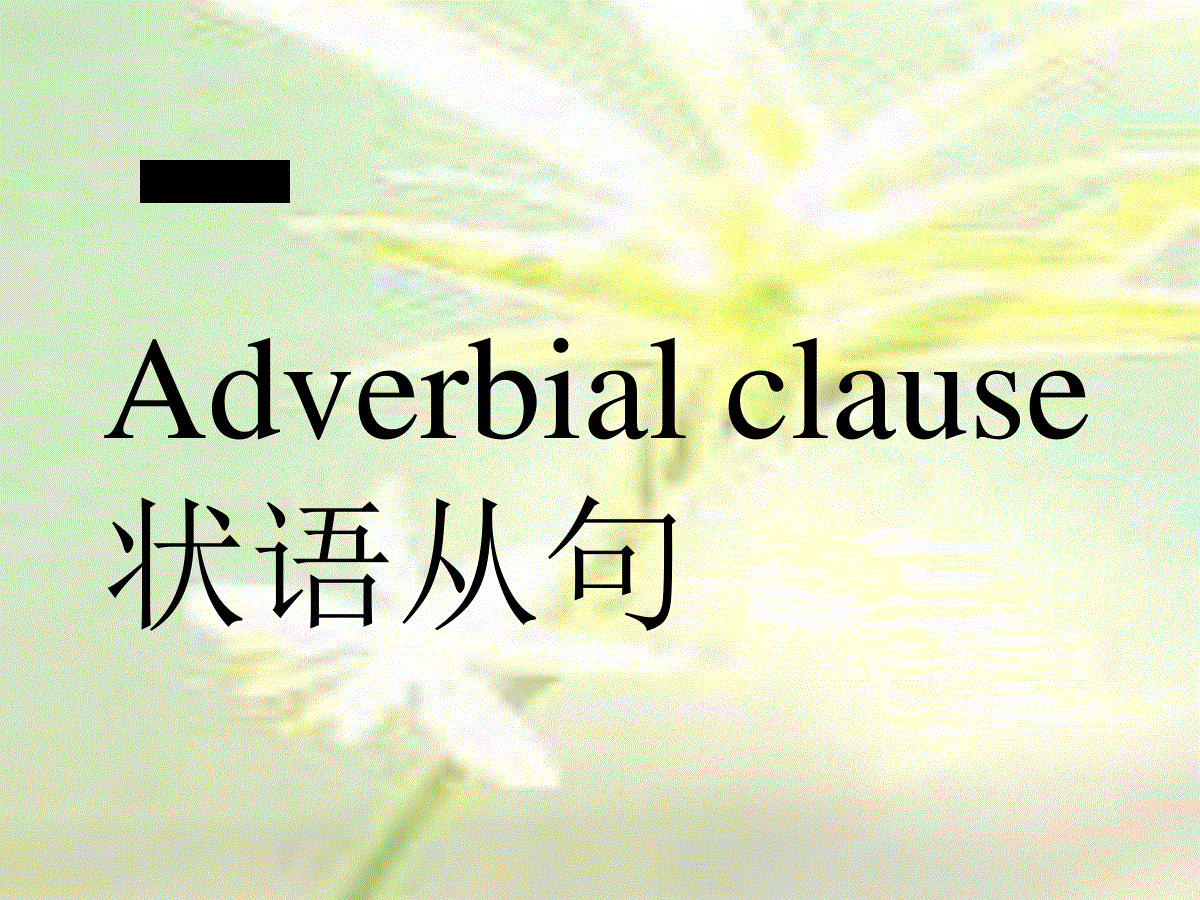当前位置:首页 > 商业/管理/HR > 管理学资料 > 状语从句课件 (29)
Adverbialclause状语从句•状语从句的分类•when,while和as的区别•because,as,since和for的区别•themoment引起的状语从句•nosooner…than和hardly/scarcely...when•as引导让步状语从句•though和althoughWhileJohnshoppedforhotdogs,hiswifeshoppedfortomatoes.时间状语从句Wherethereislife,thereishope.地点状语从句Supposewecan’tgetthenecessaryequipment,whatshouldwedo?条件状语从句Heisthreeyearsolderthanhisbrother.比较状语从句Hewalkedintotherestaurantasifitbelongedtohim.方式状语从句I’llleavehimanotesothathe’llknowwhereweare.目的状语从句Becauseyouobject,I’llchangetheplan.原因状语从句Smithhadsuchafiercedogthatnoonedaretogonearhishouse.结果状语从句Youngasheis,heknowsalotofthings.让步状语从句主句的谓语是瞬间动词,从句用延续动词的时候,这三个词没有区别。As/when/whileIwaswalkingdownthestreet,Inoticedapolicecarinfrontoftherestaurant.when引导的从句中的谓语动词可以是瞬间动词(1)或发生在主句句之前(2)(1)WhenJohnarrivedIwascookinglunch.(2)I’llletyouknowwhenitisarranged.while强调两个动作在某一时间内同时发生。从句不能表示一点时间,要表示一段时间,用延续性动词。While也可以表示“而”。Whileshewashavingsupper,sheheardthebellring.______(when/while)hegotthegoodnews,helaughed.got是瞬间性动词WhenShelikesmusic,whileIprefersports当表示主句和从句的两个动作同时发展变化的情况时,用as,意为“随着”。Asmoreandmorevisitorscomehere,theforestbecomesdirtieranddirtier.because语气最强,表示直接原因,一般放在句末。as和since引导是众所周知的原因,常放在主句前,翻译为“既然”。for引导的是并列句,对前面的句子进一步补充和说明。两个句子之间一般用逗号分开。IamleavingbecauseI’mfedup.Sinceeverybodyishere,let’sbeginourdiscussion.Idecidedtostopandhavelunch,forIwasfeelingquitehungry.Themoment,theminute,theinstant这三个词都可以做连词,相当于“assoonas”Youseethelighteningthemomentithappens,butyouhearthethunderlater.nosooner…than和hardly/scarcely...when主句从过去完成时,从句用一般过去时Hardlyhadhebeguntospeakwhentheaudienceinterruptedhim.as引导让步状语从句,意为“虽然,尽管”,相当于though。从句一般采用倒装结构:分词/副词/形容词/名词+as+主语+动词。名词位于句首时,冠词省略。Childasheis,hecantellblackfromwhite.(thoughheisachild)Tryasyouwill,youcannotpersuadehim.(thoughyouwilltry)though可以在句首,也可以在句末,although一般在句首______everybodyishere,nooneknowstheanswer.Wewentthere______wewerebusy.AlthoughthoughHeisveryyoung,_______heisveryclever.thoughThough相当于“可是”,前面有逗号





 三七文档所有资源均是用户自行上传分享,仅供网友学习交流,未经上传用户书面授权,请勿作他用。
三七文档所有资源均是用户自行上传分享,仅供网友学习交流,未经上传用户书面授权,请勿作他用。
本文标题:状语从句课件 (29)
链接地址:https://www.777doc.com/doc-3729573 .html